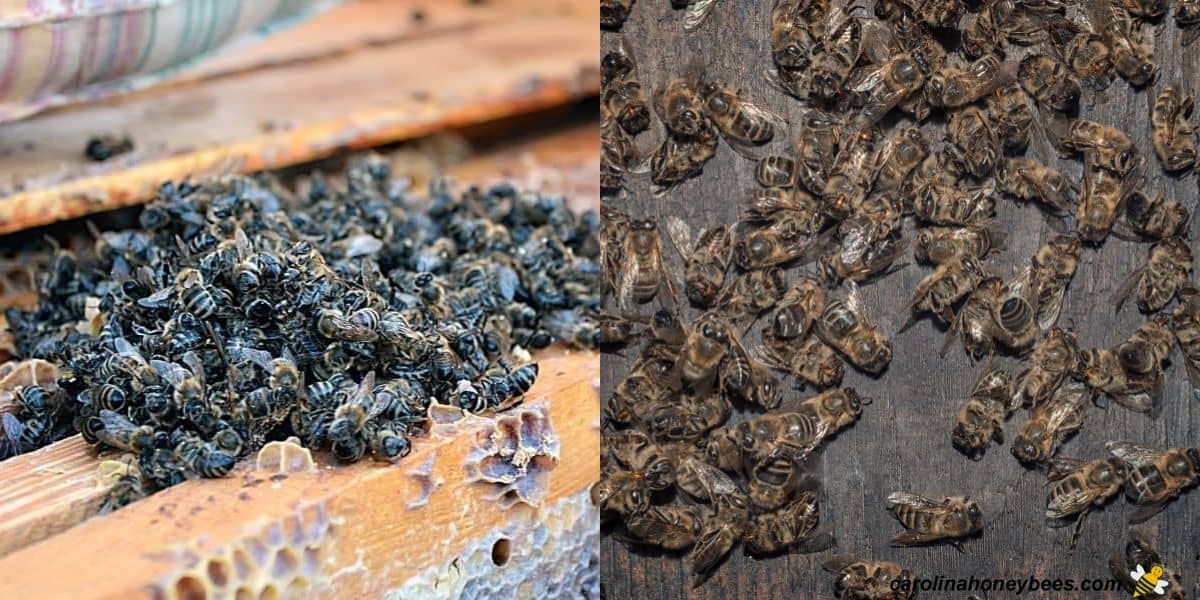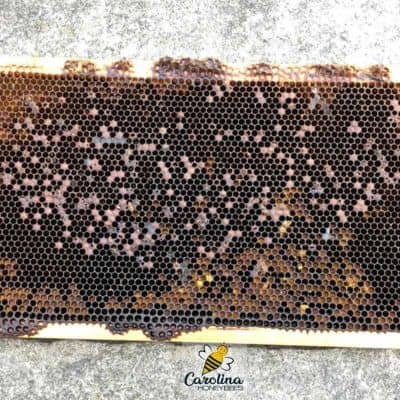What to do with a Dead Beehive?
Discovering a dead beehive is discouraging, but every beekeeper will experience it at some point. While a hive autopsy may not always reveal exactly why the colony died, you can still salvage valuable resources and prepare the equipment for future use. Beekeepers call these losses “deadouts”. This guide will walk you through what to do with an empty hive—so you’re ready for new bees when the time comes.

I wish I could say that I have no experience with cleaning up dead honey bee colonies. Unfortunately, I have done so more times that I want to admit. It happens. But, it is always and important part of good beehive management to save any resources possible.
Signs that Your Hive Has Died
Before you can decide on the next steps to take, a little investigation is required. How do you know the hive is dead?
Often, the beekeeper goes to the bee yard with the intent to perform a routine hive inspection and finds an empty box.
Other signs that cause concern are:
- no movement or sound inside the hive (even on warm days)
- dead bees piling up at the entrance
- a lack of foragers returning to the hive
Checking a Dead Beehive- Hive Autopsy
A good hive autopsy can reveal hints about what happened to your honey bees. Take advantage of the opportunity to do a bit of diagnosis. You may find something that helps you save a future colony.
You may find dead bees inside the hive – on the bottom board or in the comb. Other-times, the box will be completely empty.

Inspecting the Hive for Usable Resources
As you open the hive, take note of any grouping of dead bees (head-first in the comb). If the comb near the dead bees is empty, this is a sign of starvation. Lack of food is a common reason bees die in Winter.
If the colony population is very small, bees may die because they are unable to generate enough heat for winter survival of the colony.
While regrettable, starvation and low population are not reasons to discard any of the hive components or resources.

Inspect the Bottom Board
What do you see on the bottom board of the hive? Any signs of mice or mouse droppings? Often, a bee colony will abscond when mice move into their home.
Look closely through any dead bees at the bottom of the hive. Do you see dead varroa mites or deformed bees with shriveled wings? If so, your varroa mite treatments may have not been successful.
A strong colony with a massive mite infestation can appear healthy to outward appearances – until it suddenly crashes.
Look for Pest Problems
Among the dead bees you may find Small Hive Beetles or their larvae. Beetles can bring down even a strong hive in the right conditions. If beetles destroyed your hive, the wax combs will be full of beetle larva and slime.
Opportunistic bugs such as earwigs may be found in the hive. They are taking advantage of any free food but are not the cause for the dead hive.
Wax Moths Do Not Kill Bee Colonies
Wax Moth larvae may be in the dead bees, comb and hive debris. They are nature’s cleanup crew.
I often hear beekeepers say that wax moths killed their bees. No, they really did not. Wax moths fly into weak or dead beehives and lay eggs on the comb. Normal colonies evict the eggs or larva.
The wax moths did not cause your colony to die. But why was the hive weak or empty to begin with?
This is a time to look back at your management tactics over the last couple of months. Did you ensure the colony had a good queen, etc.?

Any Signs of Disease?
The ultimate goal of checking a dead beehive is to be as sure as you can that the bees did not die from disease – or anything that would make the equipment or hive resources unsafe for new bees.
While most bees do not die as a result of disease – it can happen. Many bee viruses and pathogens are impossible to detect outside of a lab.
Often, we don’t know if the colony failed due to disease – unless you send in samples for diagnosis.
Also, many of the symptoms experienced by bees can apply to different causes. Nosema disease sometimes causes diarrhea but so do other problems.
AFB
The most serious disease to be concerned about is American Foul Brood (AFB). This disease does have some recognizable markers including: sunken and perforated cappings, ropy brood and a bad odor.
If you notice any dead brood in the hive that has symptoms related to AFB, ask for help from your state extension service or local beekeeping association.
This brood disease is deadly, uncurbable and spreads easily to other hives. Equipment from diseased colonies should not be reused and in most cases is destroyed.
Fear of AFB is the major risk in buying used beekeeping equipment.

Assessing and Cleaning Up
When a dead hive (not believed to be diseased) is found quickly most of the frames of honeycomb may still be in good shape. This is wonderful news and a chance to recoup some resources.
Remove any frames of comb that contain a lot of wax moth damage. Don’t worry about a small amount of webbing or damage. A strong new colony will patch that right up.
Tear out old black honeycomb (so black you cant see through) and discard it. Some folks attempt to melt it down and get a little beeswax but the smell stops me.
It is always a good idea to rotate out old frames of comb. Replace them by installing new wax foundation or plastic (if your prefer) for healthier colonies.
If you used plastic beehive foundation, scrape off the destroyed comb, webbing and frass-if the damage is significant. There is no need to replace good wooden frames if AFB is not suspected.
Store Good Drawn Comb
When honey bees are building comb they expend a lot of energy. Good drawn comb is a rich resource for a new colony.
However, they are vulnerable to attack by wax moths during the warm months if not protected.
Freeze the frames for several days (to kill any pest eggs) and then store the supers of drawn comb in either an airy shed or moth tight location.
Clean the Hive Boxes
What about the hive boxes, do they need to be cleaned or sanitized. Some beekeepers believe it is a good practice to wash beehive boxes (from dead hives) in a light bleach solution. I’m not sure it helps but it shouldn’t hurt.
If the dead hive has become a “hot mess” before you discovered it, you might see wax moth cocoons in the wooden ware.
You can simply scrape them off and scorch the inside of the hive box with a torch if you wish. This should kill any hidden moth eggs.

Can You Harvest Honey from a Dead Hive?
In most cases, you can harvest honey from a dead hive. If the honey seems clean and fresh (not fermented), and you have not treated for mites with chemical treatments. It should be safe to eat or keep frozen for later use by other bees.
It is a good practice to always keep a couple of frames of honey and pollen (bee bread) in the freezer if you have room. They will come in very handy later on-for you or the bees.
Preparing for New Bees
Once you have cleaned and inspected the hive, you can begin preparing it for new bees. Ensuring the hive is safe, structurally sound, and free from disease or pests will give your next colony the best chance at success.
Depending on the time of year when you discover the loss, you may have to wait for Spring bee deliveries. Winter beekeeping can be difficult as we wait for warmer temperatures to arrive.
Take a few days to get everything cleaned and organized. Then, you will be ready to bring new life into that old “deadout beehive”.
Final Thoughts
Finding a dead hive in your backyard apiary is never a good thing. Dead hives represent a loss of time and money too. We don’t always learn why the colony failed. But, it is smart to save every resource possible for new bees.
Additional Resources:
- Betterbee – cleaning up
- Backyard Beekeeping

